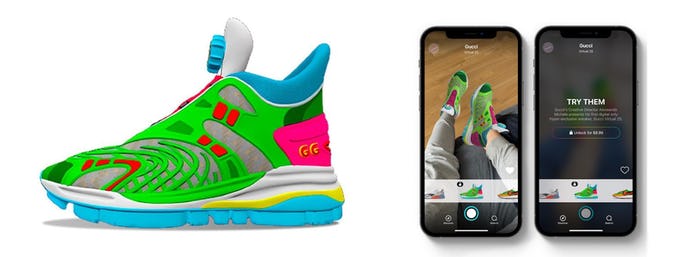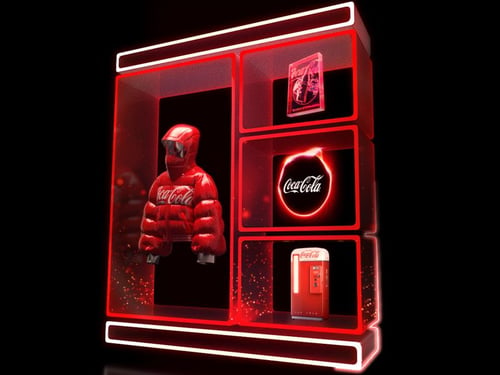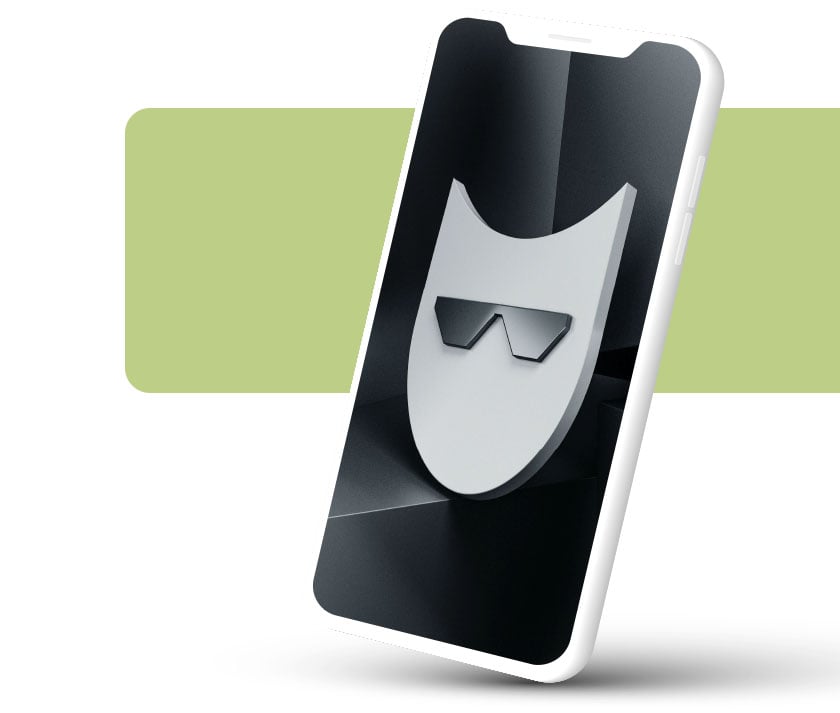"The next big thing will start out looking like a toy."
- Chris Dixon, General Partner, Andreessen HorowitzEstimating the exact future has always been impossible but guessing the general ideas that will be important concepts in the future is just merely challenging.
One of the ideas that has often proven correct in the world of technology is that the future often starts out looking like a toy. People saw a piece of technology only as a novelty or fringe concept before it changed the world.
The first computers were unbearably slow. The first telephone could only cover 1-2 miles.
NFTs appear to be one of those things. It looks like a toy but the concept and the technology behind it have the opportunity to create an entirely new and big market for which brands can engage their customers.
NFTs have certainly created a lot of noise in 2021 with a large share of volatility: Beeple sold an NFT collage for $69 million, NFT sales skyrocketed August of 2021 and then crashed again with the number of transactions subsequently dropping by 90%.
It’s relevant for brands now because the concept is approaching critical mass - 20% of Americans are familiar with NFTs and nearly 4 million have purchased one - and many leading brands are having successful NFT experiences.
This guide is meant to be an informative and actionable guide that you can use to:
- Understand the Basics of NFTs
- Tips for a successful NFT launch (and how to launch with Threekit)
- Planning for the future with NFTs
One platform, three ways to visualize your products Learn More
1) Understanding the basics of NFTs
Before diving into how to use NFTs for your brand, let’s talk about the basics of NFTs and highlight some examples.
What are NFTs?
Non-fungible tokens (NFTs) are a unique token that tells the owner and the whole world that they are in fact the true owner.
Creating an NFT is called minting. When an NFT is minted, it's given ownership and recorded on a digital ledger called a blockchain. A blockchain is a distributed ledger which is like a big Excel spreadsheet where everyone can see every entry.
After an NFT is minted, it is stored and managed via a crypto wallet like Coinbase.
NFTs usually take a form factor of images (e.g. Jpeg), but also can be 3D model (e.g. glTF), audio, video or games but can also take on other forms.
What are some examples of Brand NFTs?
When it comes to brands and NFTs, there have been a number of high profile NFT drops. Here are a few examples.
Asics Sneaker NFT
Before Adidas and Nike could drop NFTs Asics had a successful NFT launch in July 2021. The drop features 189 digital images from their Sunrise Red collection which was designed in collaboration with respected artists.

According to Asics this collection “is a celebration of sport and a first step in building a future where digital goods inspire physical activity.” Additionally all proceeds from the sales were invested in an Asics digital artists in residence program.
Gucci NFT video and Virtual Shoe
A recent report from Morgan Stanley estimated that the market for luxury NFTs will reach $56 billion by 2030. Gucci helped set the precedent for luxury brands with a launch of a 4 minute video collaboration with the Italian fashion designer Alessandro Michele. The video raked in $25,000 at auction.

Gucci video NFT
Gucci also deserves extra credit for a virtual shoe (not an NFT) they launched for a mere $9. It’s available for virtual try-on and users have up to 25 options. This is a strong move for Gucci to offer a more accessible entry point to the brand.
 Gucci virtual shoe
Gucci virtual shoe
Coca-Cola Friendship Box NFT
Coca-cola released an NFT that was a collection of merchandise including a vintage cooler with three other NFTs inside including a custom bubble jacket, a sound visualizer and a card. The top bidder also received a real-life stocked Coca-Cola refrigerator.

Coca-Cola NFT drop
A unique aspect of this drop was that the coat could be worn on your avatar in the Decentraland metaverse, a virtual world where people can explore and buy virtual real estate. Process benefited the Special Olympics
“Fans of the Coca-Cola brand expect the same iconic and optimistic experiences they’re used to in real life in the digital world,” said Oana Vlad, global senior brand director, Coca-Cola Trademark.
2) A Short Guide for successful brand NFTs
Here are key tips for brands considering launching their own NFT:
- Make it about the community - Successful Brand NFTs start and continue to gain steam based on an audience that is truly engaged. Take the time to understand your audience and make the NFT focused on what is truly unique about your brand and your audience.
- Make the NFT useful - NFTs will be more well received if there are clear benefits such as: the holder getting access to special discounts, early access to new products, special access at events.
- Start with scarcity - Especially for your first NFT, a limited set will allow your brand to test the waters.
- Make each NFT unique - A special element of NFTs is that people enjoy them as a unique expression of who they are as a person. Create 1:1 drops of your product and consider real-time customization (available with Threekit) so customers can configure their NFT to their style and then mint it
- Make it interoperable - brands like Coca-Cola saw success with NFTs by merging the digital worlds. An NFT coat was not only available as an NFT but could be work on an avatar in a video game. If you sell a highly customizable product that's an expression of someone's style, consider offering buyers the opportunity to buy an NFT along with the physical product.
- Have an evolving roadmap - The best NFTs are evolving - they add storylines and uses and community members that make owning the NFT more rewarding. Some brands will “airdrop” additional NFTs or benefits to NFT owners as an additional incentive.
- Consider the environment when choosing which blockchain to mint your NFT - Some blockchains like Ethereum and Bitcoin use what’s called “proof of work” which is highly energy intensive and has a serious negative impact on the environment. They are also much more expensive to mint. Other blockchains, like Ethereum 2 and Polygon are “proof of stake” and are 10-100x less bad for the environment and cheaper.
How Threekit customers will create NFTs - a short guide:
- Customer customizes your product on your website with Threekit 3D or 2D configurator
- Threekit produces a glTF or image file that can be used as an NFT
- Threekit can send the image or 3D file to an NFT minting service or integrate with your NFT capable eCommerce system (coming soon) or we can mint it for you and transfer it to your customers wallet.
- The end result is a blockchain-secured NFT that is now in your customers cryptowallet. Then you can then keep it or resell it via an NFT marketplace like OpenSea or Rareable.
“If you’re the only person who owns a cell phone, it’s useless. If two people own cell phones, there’s some value. If billions of people have cell phones, you need a cell phone. That’s the impact of increased adoption. That’s the potential future of NFTs.”
Tal Lifshitz, a partner and co-chair of the cryptocurrency, digital asset, and blockchain group at Miami-based Kozyak Tropin & Throckmorton (KTT)
3) Future considerations with NFTs
Going Mainstream via Low-Cost NFTs
NFTs are luxury items right now because they are incredibly expensive to simply create on the blockchain. To create a NFT and transfer it, the costs are often $100 or more, simply for transaction fees.
When these inefficiencies are addressed, either via moving away from proof of work, or towards non-blockchain solutions, costs for NFT creation and ownership will drop. This will consequently expand the market for NFTs outside of just luxury goods.
One will be able to use NFTs to denote ownership of any digital good, and it is likely we will use NFTs for denoting all such ownerships. This market for low cost NFTs will likely be 100 to 1000x larger than the current market.
Standardization of Ownership Rights
In regards to ambiguous rights, NFTs are incredibly varied and in many ways this is similar to real world contracts. One has to read the fine print to understand what you are getting with an NFT. In many cases, you only get the right to say you have a digital signature of a media file and in some cases you get a lot more. It is likely that as NFTs mature, there will be more and more standard contracts and rights agreements which creators will opt into. These will clarify the current situation.
Digital Rights Management is Coming, Whether you Want it Or Not
This is bad news for many people, but DRM (digital rights management) is coming in order to ensure the rights of NFT owners. NFT owners may have copyright rights which they will want to enforce in order to ensure the value of their creations are preserved.
DRM is likely to not appear in the web browser for simple images. Those are an early and immature NFT application. But as NFTs spread throughout online society as representing virtual clothing or in-app purchases or digital twins, copyright holders will force DRM to follow suit.
Yes, you can still share copyrighted music and video privately and the same will be for the images underlying NFTs, but if you share them in major online platforms in the future without asserting that you have ownership rights to them, it is likely that they will start to be demonetized or blocked.

